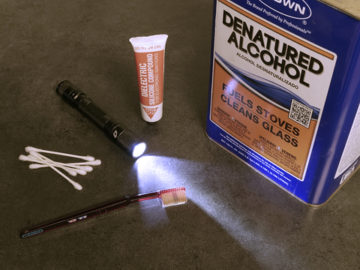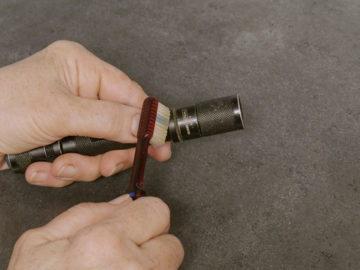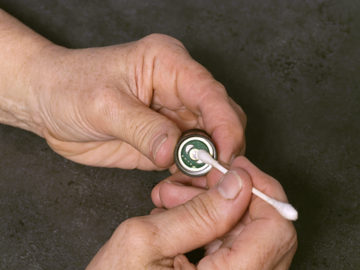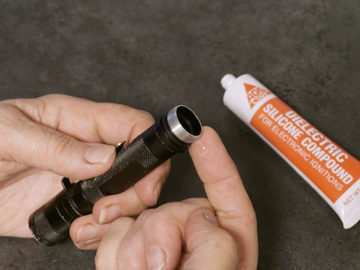Caring for your defensive flashlight

You do carry a high-intensity flashlight as part of your everyday ready kit, don’t you? If not, you should! I believe the compact high-intensity flashlight is the most useful self defense tool you can carry. It serves as a detection device, allowing you to spot danger before it can reach you; as a deterrent, using the bright beam to distract and disorient; and as a response tool — an impact weapon in close quarters. It’s useful for a wide range of incidents where lethal force is either not warranted or not available.
As a piece of general safety gear it’s invaluable. It allows you to find your way safely in dark corners or down stairways when the emergency lighting fails to activate. As a practical tool it allows you to see to the backs of dark drawers and closets. I use my flashlight many times a day, and it’s helped me with everything from finding my keys to driving away car prowlers.
A good quality flashlight is a durable device, but even the best product benefits from some regular maintenance. My favorite flashlight is this beat-up FourSevens Quark Tactical. I bought this light in 2011, and it’s been used virtually continuously since then. In fact, I’ve used it so much I’ve actually worn out three of the rubber boots that cover the switch! I have, however, kept it in good repair by maintaining it properly.
Here’s how I take care of mine.
1) Clean the body.
I use an old toothbrush to remove dirt and debris from the exterior surfaces and around the tail and head joints. I slightly unscrew each and clean out the joint before taking the tail and head completely off.

2) Clean the threads.
A paper towel works well to remove dirt and old lubricant from the threads and associated o-rings. Don’t forget to wipe the threads inside the head and tailcap!
3) Clean the lens.
Since I wear glasses I have many micro-fiber cleaning cloths around, which are ideal for cleaning the lens. If there is visible dust or sand on the lens, carefully blow that off before using a dry wipe. If the lens is particularly dirty, a Q-tip soaked in Windex or diluted dishwashing liquid should be used to gently remove the dirt without scratching. The cleaned lens can then be dried with a micro-fiber cloth or a dry facial tissue.
4) Clean the battery contacts.
I recommend a Q-tip dipped in alcohol to clean the areas in contact with the batteries. The tailcap is often a coiled spring, which is easy to clean. The head contacts may be a spring-loaded plunger or a flat contact; both are cleaned in the same manner.

If you see obvious corrosion it can be removed with a common pencil eraser. Gently scrub the contact with the eraser then blow away any residue. You can then clean as normal.
5) Lubricate the threads and o-rings.
It’s important that the threads and o-rings be protected from wear. The proper material to use is silicone grease, which is available at your local auto parts store or the plumbing department of your friendly big-box home improvement store. Make sure the package says silicone grease, as opposed to lithium or other greases. Silicone grease will not harm the o-rings, but other greases will.

Apply just a dab to the o-ring and spread it with your fingertips. Do the same with the threads. Do not get the grease on battery contacts, springs, or any metal-colored areas, as it will prevent electricity from flowing! Just a dab on just the threads, spread very thinly, is sufficient.
6) Reassemble your flashlight, insert fresh batteries, and check for proper operation. Your light is good for another 6 months to a year (depending on how much and where it’s used, of course.)
Start with a quality flashlight, maintain it properly, and you’ll always have reliable light at your fingertips!
– Grant
Listen to this blog – and subscribe to it on iTunes by clicking this link!
- Posted by Grant Cunningham
- On April 14, 2017

